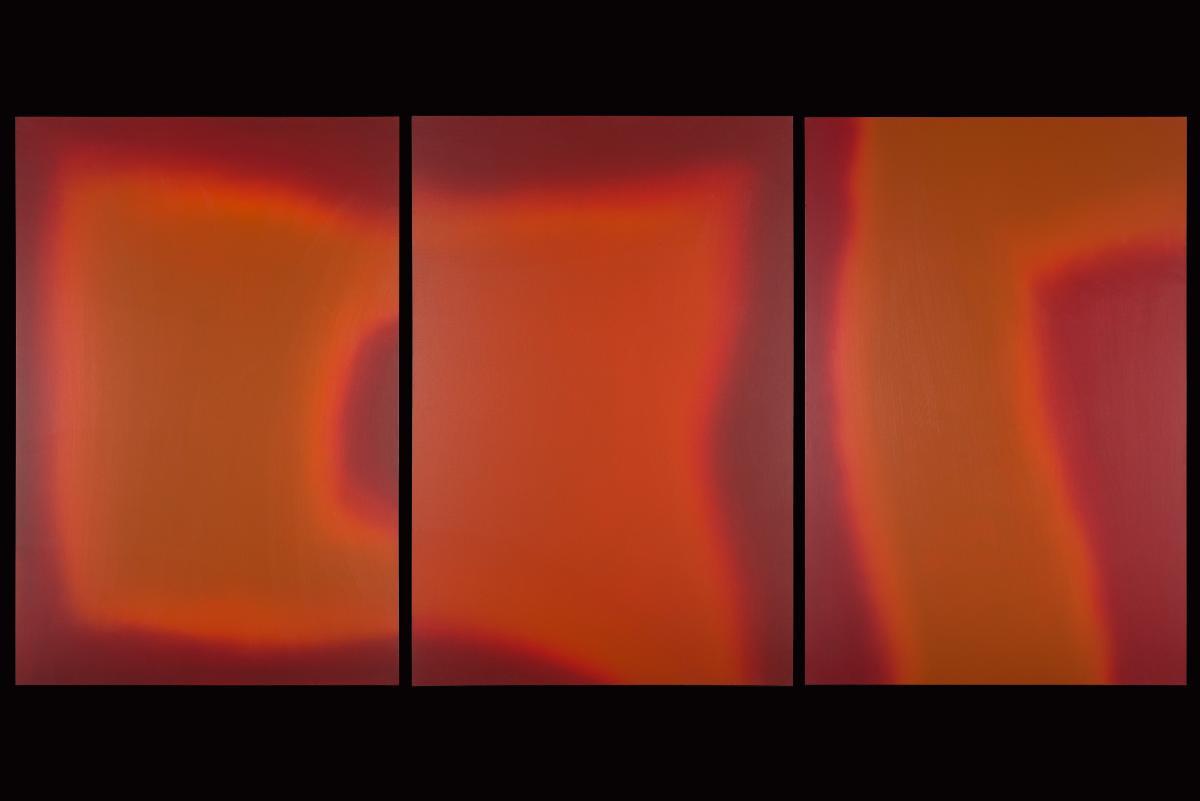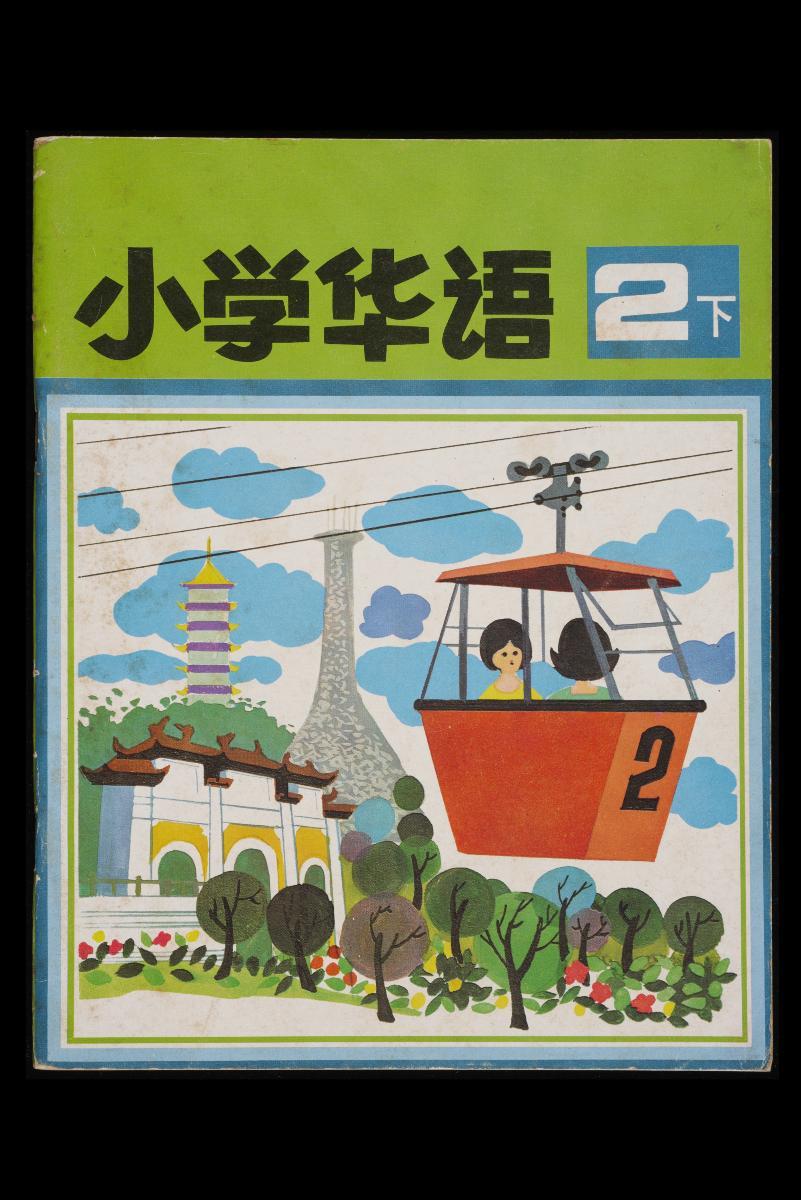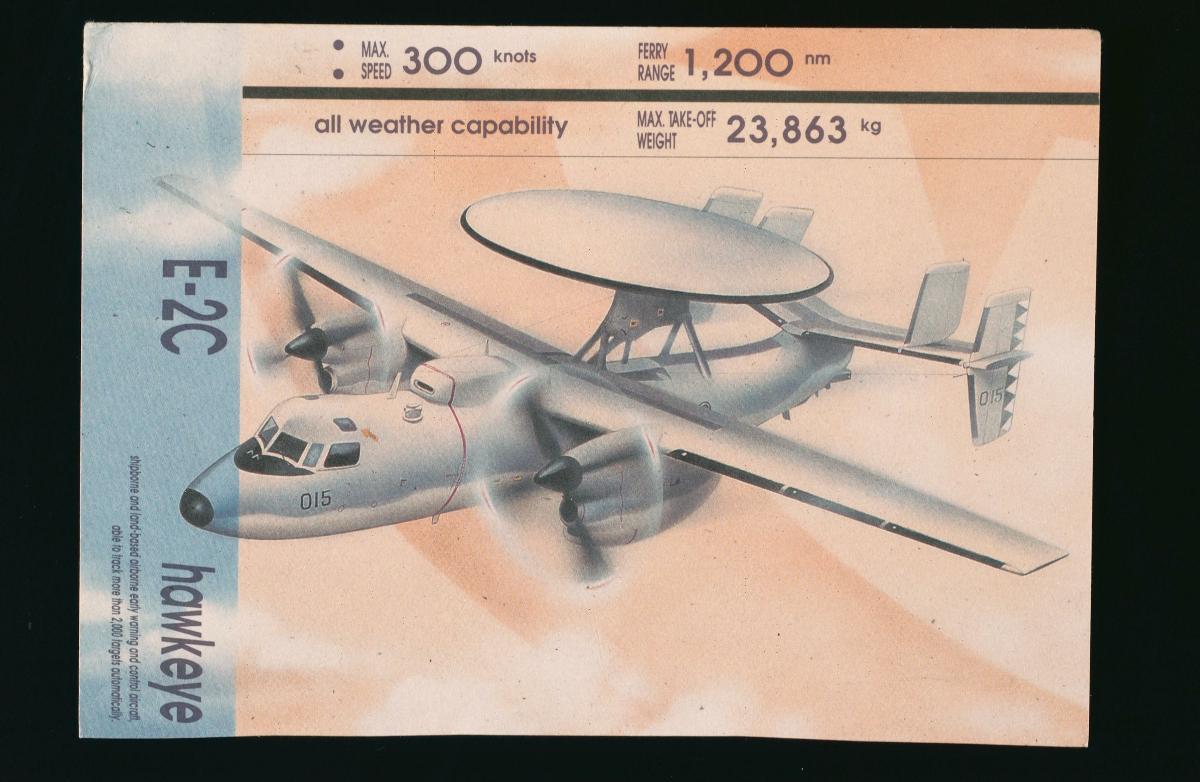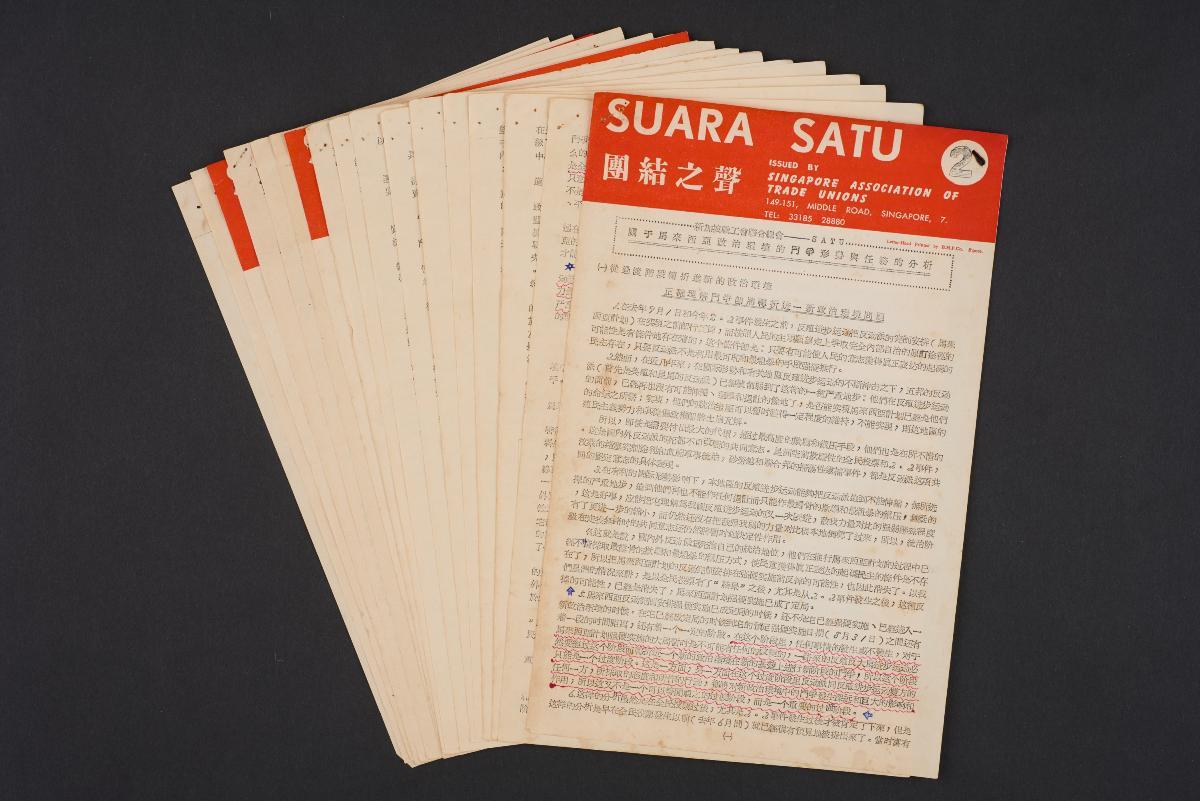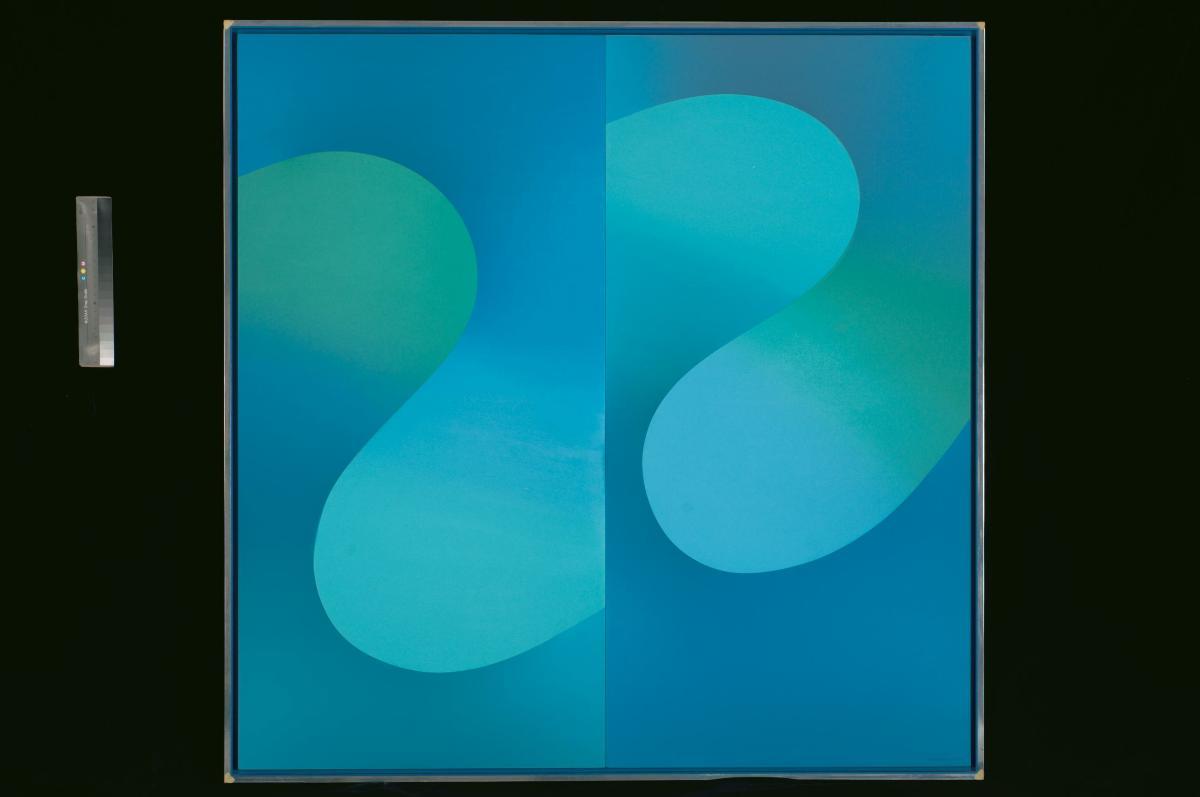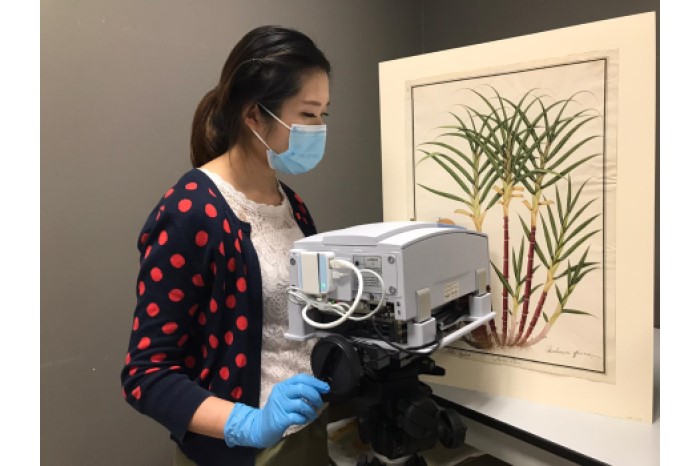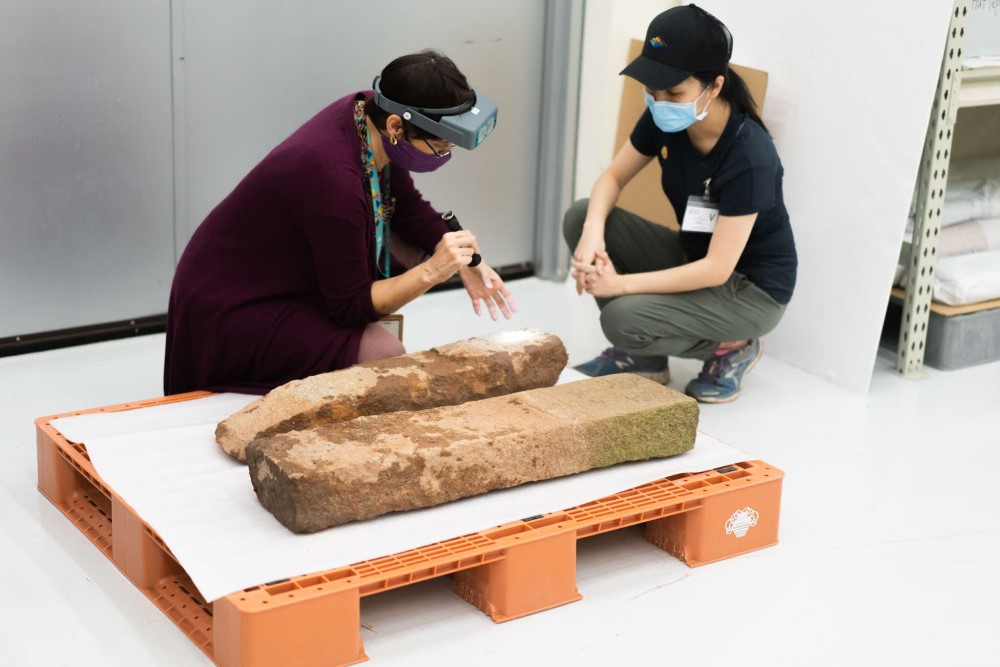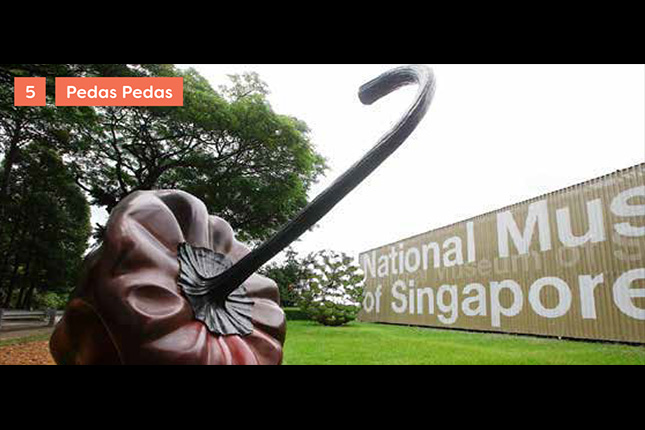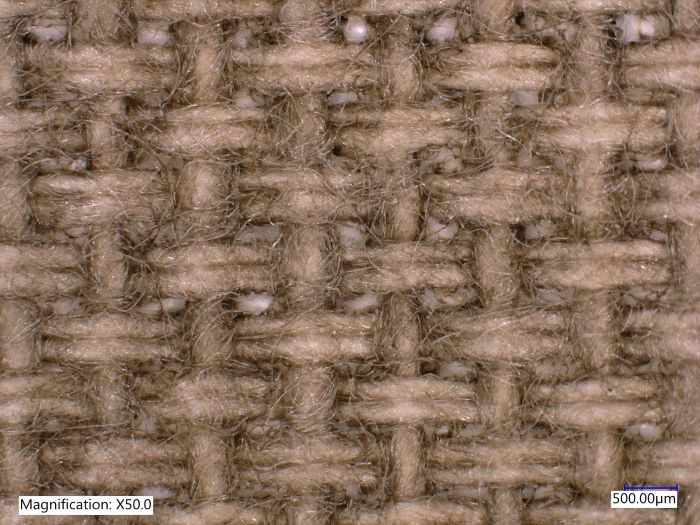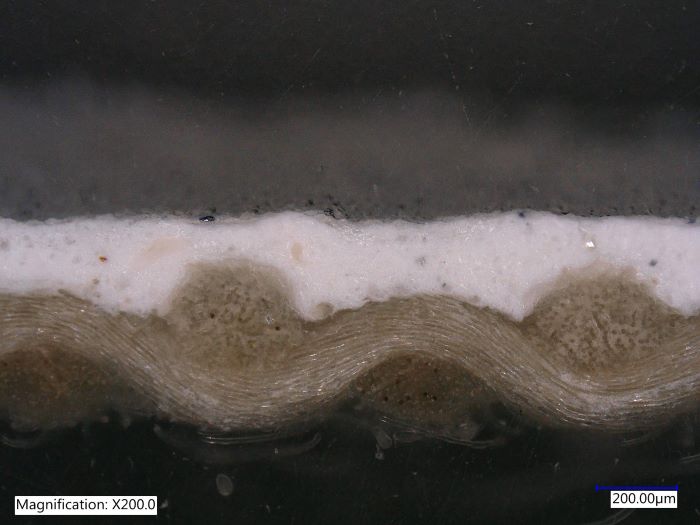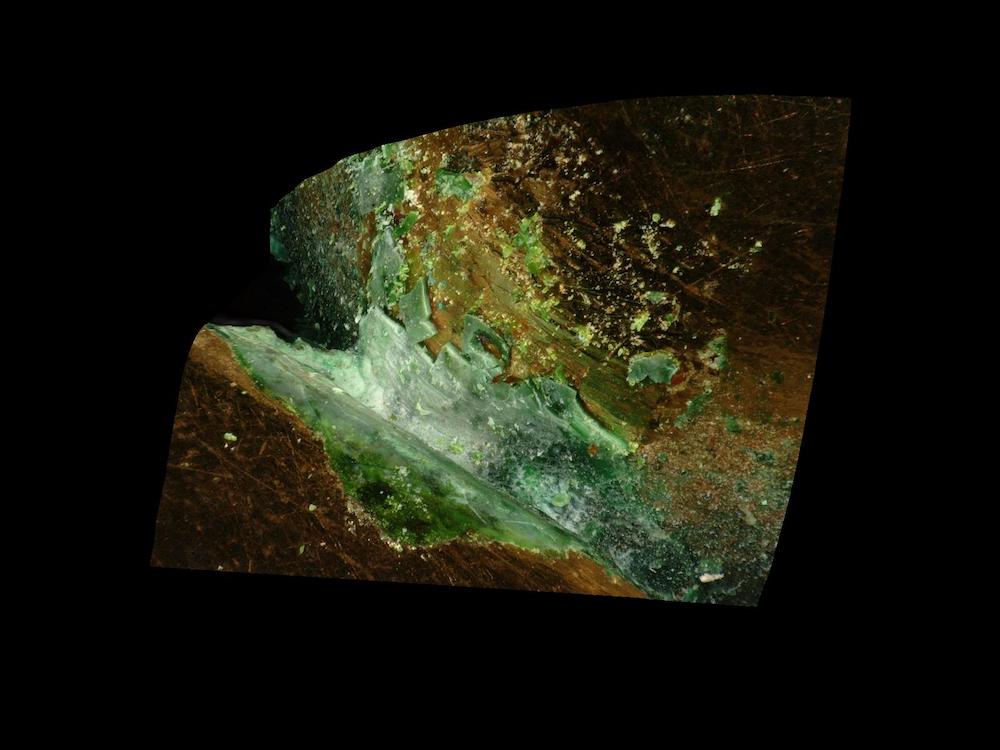Abstract and seemingly ‘minimal’ in their formal composition, Kumari Nahappan’s paintings resist easy identification of content and subject matter, yet to describe them as minimalist also misconstrues the work. The paintings draw deeply from Hindu religious belief and practice, and may been seen as meditations upon the notions of time, cosmic energy and ritual. Even as these colour fields evoke spiritual forces or domains of energy, they also draw upon and transit in other fields of sensorial experience, notably sound. In several past works, Nahappan has referred to ‘Om’ or ‘Aum’ which is the primordial and sacred sound from which the cosmos and world comes into being. Here, “Suara” – which means sound / voice in Bahasa Malaysia – was created following Nahappan’s week-long stay in the Rajastan desert in India, and this triptych is an endeavour to capture the sounds of the desert – the overwhelming sound of silence. Yet this ‘silence’ is one that is far from barren. Instead – consistent with the concepts of Hindu spirituality – the paintings represent the complex and seemingly paradoxical idea of the Void, or states of emptiness, as filled or saturated even, with potentiality and infinite possibility. Kumari Nahappan’s (b. 1953, Klang, Malaysia) practice encompasses inter-disciplinary genres, from painting to sculpture and installations, and her works have a distinctive visual identity that is decisively shaped by her cultural roots and beliefs. Nahappan has received commendations in the Philip Morris ASEAN Art Awards & UOB Painting of the Year. She has exhibited widely internationally, including Museum der Kulturen in Basel, Tropenmuseum in Amsterdam, Mori Art Museum, Tokyo and Singapore Art Museum, Seoul Art Centre in Korea, Museum Rudana in Indonesia.




